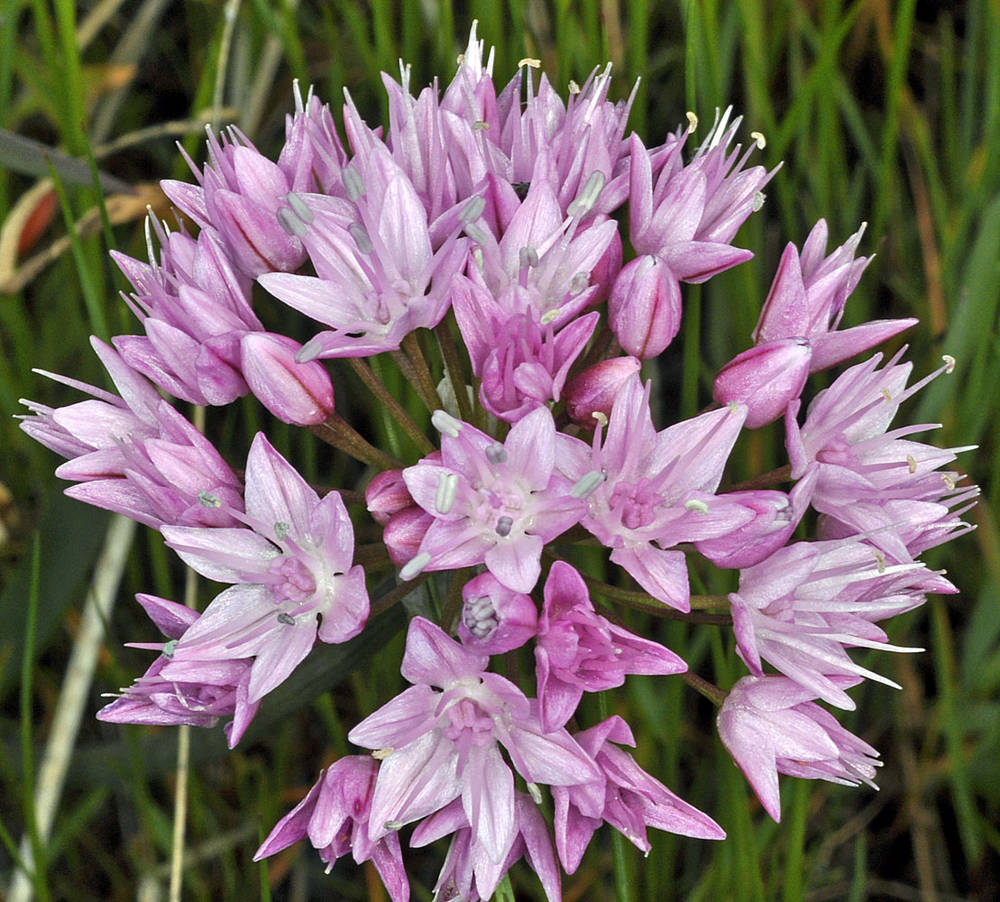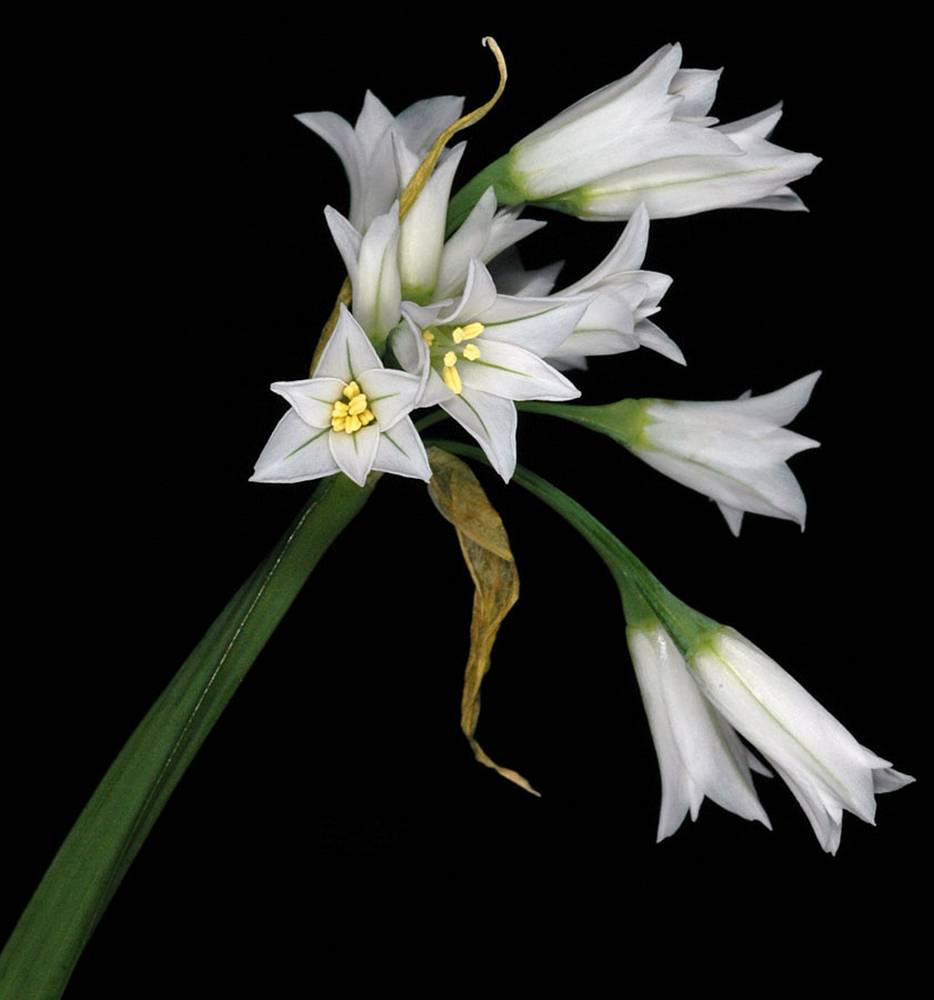Allium nevii
Allium triquetrum
Nevius' onion
three-corner leek
1–5+; ovoid;
outer coats enclosing 1 or more bulbs, membranous; more or less reticulate;
cells quadrate to polygonal, vertically oblong; without fibers.
5–20+; increase bulbs absent or more or less equaling parent bulbs, never appearing as basal cluster; ovoid;
outer coats enclosing renewal bulbs; more or less translucent, obscurely cellular-reticulate; thin, membranous; meshes delicate;
cells vertically elongate, contorted; without fibers.
usually persistent, withering from tip at anthesis, 2;
blades solid; flat or more or less channeled, falcate, 12–25 cm × 2–3 mm.
persistent, green at anthesis, 2–3;
blades solid; flat, not falcate; more or less keeled, 15–50 cm × 3–15 mm;
margins entire.
persistent, 1–3; erect; solid; terete or somewhat flattened, 2-edged, not expanded proximal to inflorescence, 15–30 cm × 1–3 mm.
persistent, clustered; erect; solid, sharply 3-angled, 10–40 cm × 1–10 mm.
persistent; erect; compact, 10–30-flowered, hemispheric;
pedicels 8–12 mm;
spathe bracts 2.
persistent; lax; loose, 3–15-flowered; more or less 1-sided;
pedicels 15–25 mm;
spathe bracts 1–2.
6–8 mm;
tepals spreading, lanceolate; more or less equal; rose-colored;
margins entire;
apex acuminate;
stamens more or less equaling tepals, or exserted;
ovary distinctly crested with 6 low processes;
stigma unlobed.
becoming pendent, 10–18 mm;
tepals erect to spreading, lanceolate; more or less equal, white with prominent green midrib;
margins entire;
apex acute;
stamens included;
ovary crestless;
stigma scarcely thickened, unlobed.
=14.
=18.
Allium nevii
Allium triquetrum
Wet meadows and along streams, in rocky clay soils, seasonally moist scablands. Flowering Apr–Jun. 0–1200 m. Col, ECas. WA. Native.
Road ditches, lawns, and other disturbed moist sites. Flowering Apr–Jul. 400–2800 m. BR, BW, Col, ECas, Lava, Owy. CA; Europe. Exotic.
Allium triquetrum is cultivated for its attractive flowers. It readily escapes in south coastal Oregon and California and has potential to become invasive.
Nick Otting, Richard Brainerd, Barbara Wilson
Nick Otting, Richard Brainerd, Barbara Wilson





